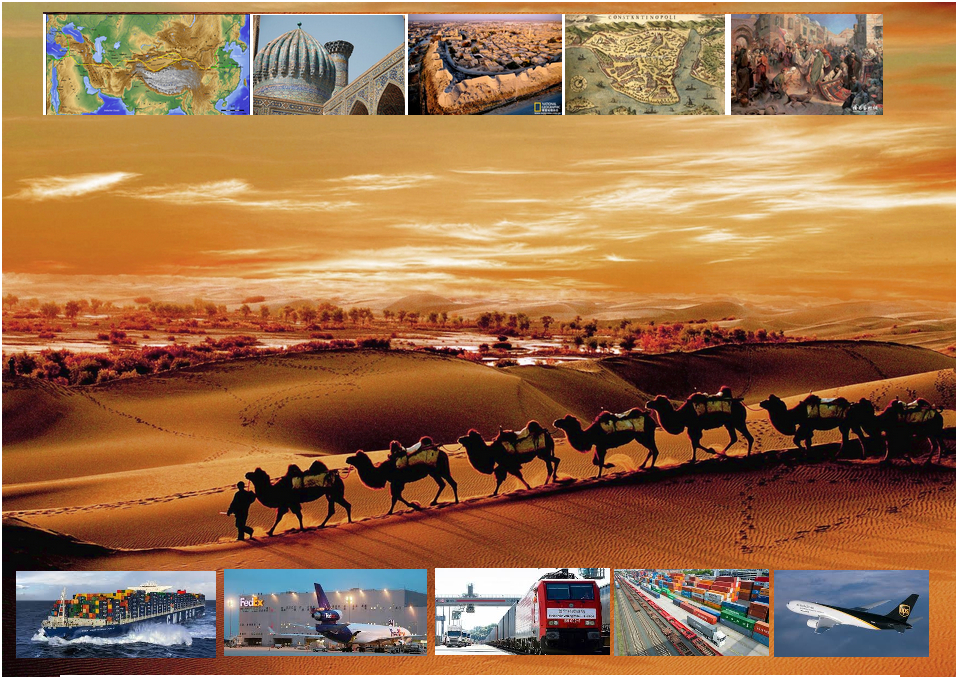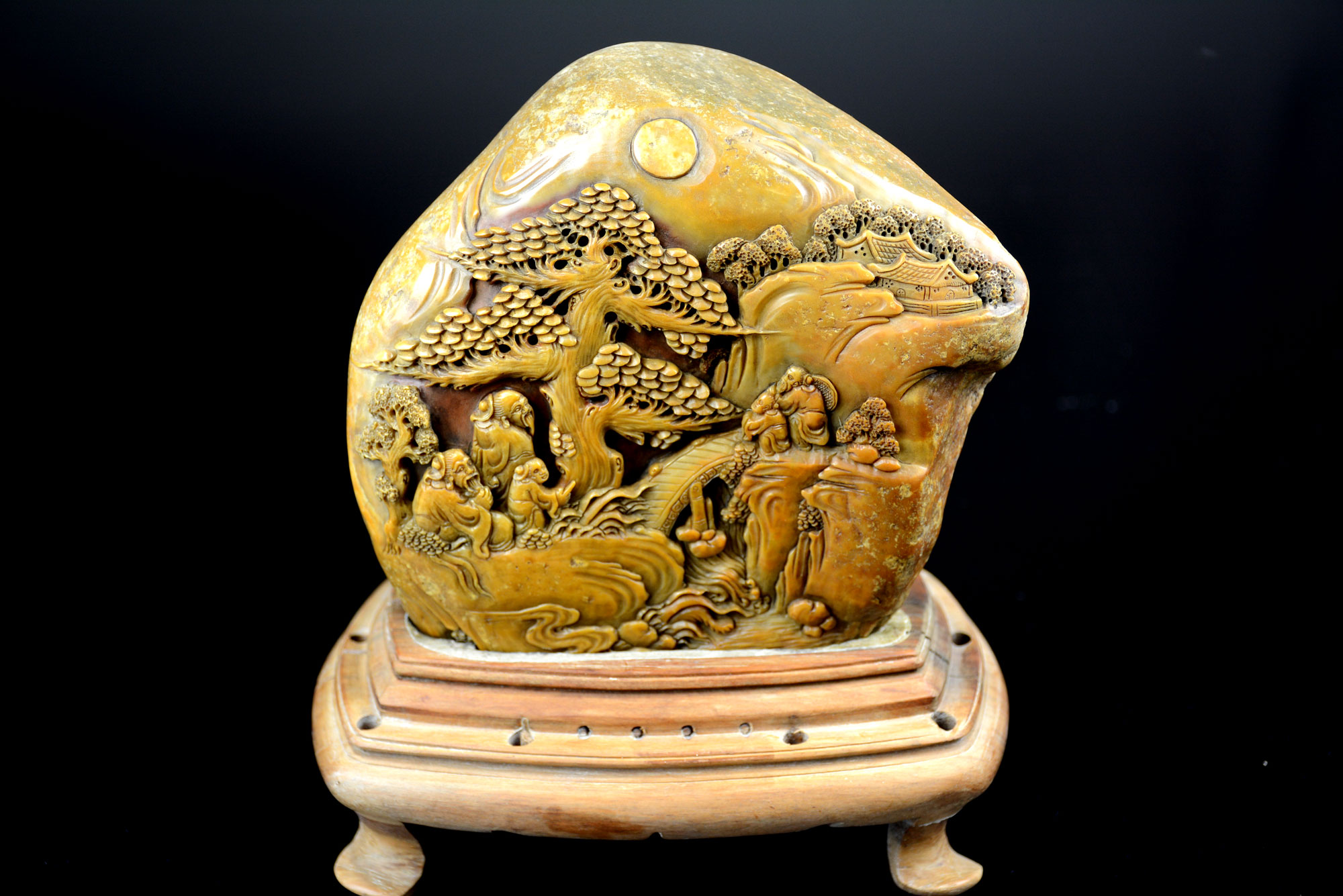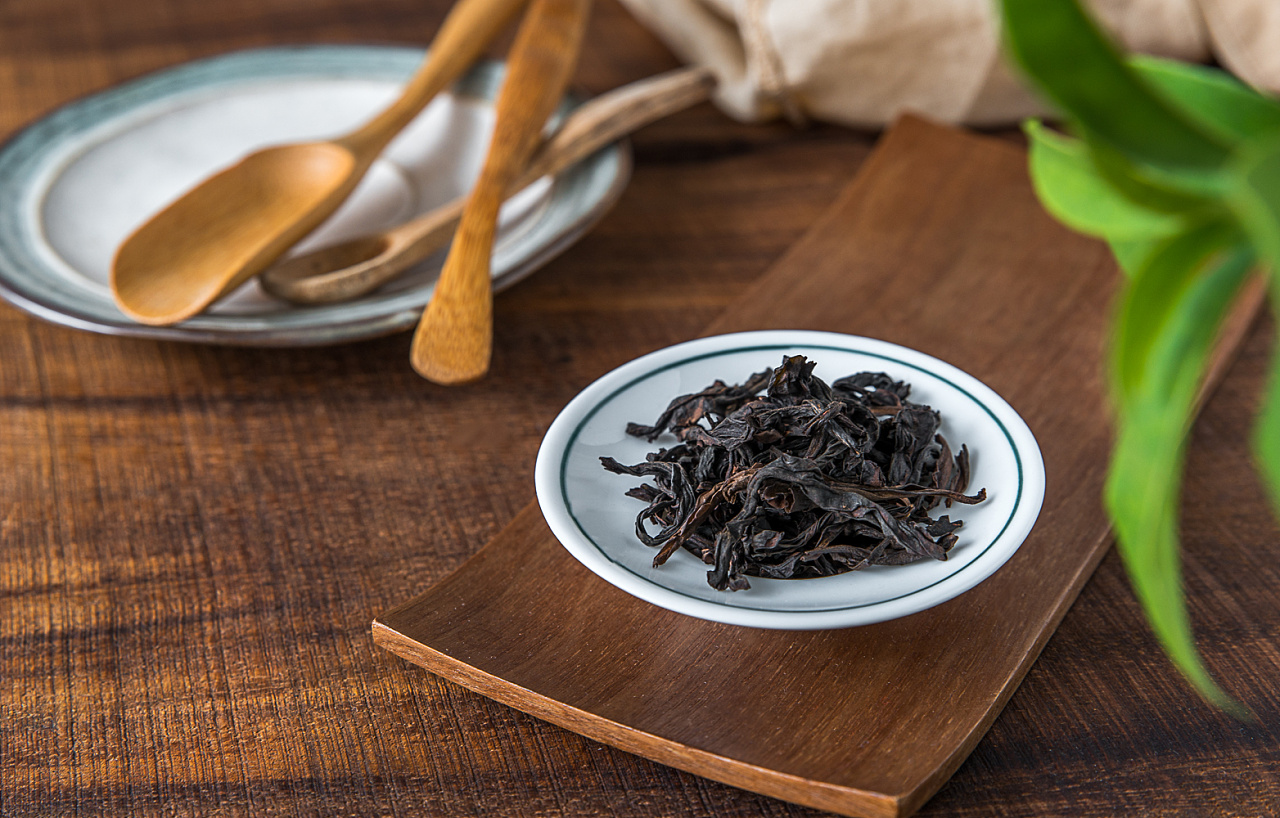
Deutsch-Chinesische Enzyklopädie, 德汉百科
 Fujian Sheng-FJ
Fujian Sheng-FJ
 Anhui Sheng-AH
Anhui Sheng-AH
 China
China
 Fujian Sheng-FJ
Fujian Sheng-FJ
 Guangdong Sheng-GD
Guangdong Sheng-GD
 Guangxi Zhuangzu Zizhiqu-GX
Guangxi Zhuangzu Zizhiqu-GX
 Hunan Sheng-HN
Hunan Sheng-HN
 India
India
 Indonesia
Indonesia
 Jiangsu Sheng-JS
Jiangsu Sheng-JS
 Jiangxi Sheng-JX
Jiangxi Sheng-JX
 Kenya
Kenya
 Roter Tee
Roter Tee
 Sichuan Sheng-SC
Sichuan Sheng-SC
 Sri Lanka
Sri Lanka
 Taiwan Sheng-TW
Taiwan Sheng-TW
 Yunnan Sheng-YN
Yunnan Sheng-YN
 Zhejiang Sheng-ZJ
Zhejiang Sheng-ZJ

红茶是一种全发酵茶,是西方茶文化中的主要茶品。明朝时产于福建武夷山的正山小种为红茶鼻祖[1],1610年荷兰人通过印度尼西亚殖民地将小种红茶运往欧洲[2],开始了西方红茶文化。红茶与绿茶不同,绿茶会随着时间而失去味道,但红茶能够保存相当长的时间而味道不变,因此红茶能适应长途运输,这也许是红茶传到西方的重要原因之一。所有红茶都是由灌木(小树)山茶的叶子制成,目前分支的两个大类为小叶中华品种(C. sinensis subsp.sinensis)和大叶阿萨姆品种(Anchimus subsp.assamica)。
红茶是经过采摘、萎凋、揉捻、发酵、干燥等步骤生产出来的;比绿茶多了发酵的过程。发酵是指茶叶在空气中氧化,发酵作用使得茶叶中的茶多酚和鞣质酸减少,产生了茶黄素、茶红素等新的成分和醇类、醛类、酮类、酯类等芳香物质。因此,红茶的茶叶呈黑色,或黑色中参杂着嫩芽的橙黄色;茶汤呈深红色;香气扑鼻;由于少了苦涩味,因而味道更香甜、醇厚、回甘。
紅茶(こうちゃ)とは、摘み取った茶の葉と芽を萎凋(乾燥)させ、もみ込んで完全発酵させ、乾燥させた茶葉。もしくはそれをポットに入れ、沸騰した湯をその上に注いで抽出した飲料のこと。なお、ここでいう発酵とは微生物による発酵ではなく、茶の葉に最初から含まれている酸化酵素による酸化発酵である。
日本語の紅茶の語源はその抽出液の水色(すいしょく)から、また、英語の black tea はその茶葉の色に由来する。茶および tea の語源は茶の項参照。以下では水色を青みのカラーを表す「水色(みずいろ)」と一般には紛らわしいため語を「茶湯の水色」と統一して表記する。
Black tea is a type of tea that is more oxidized than oolong, yellow, white and green teas. Black tea is generally stronger in flavor than other teas. All four types are made from leaves of the shrub (or small tree) Camellia sinensis. Two principal varieties of the species are used – the small-leaved Chinese variety plant (C. sinensis var. sinensis), used for most other types of teas, and the large-leaved Assamese plant (C. sinensis var. assamica), which was traditionally mainly used for black tea, although in recent years some green and white teas have been produced. In China, where black tea was developed,[1] the beverage is called 紅茶 "red tea", due to the color of the oxidized leaves when processed appropriately.[1]
While green tea usually loses its flavor within a year, black tea retains its flavor for several years. For this reason, it has long been an article of trade, and compressed bricks of black tea even served as a form of de facto currency in Mongolia, Tibet and Siberia into the 19th century.[2]
Un thé noir, ou thé anglo-indien, est fait de feuilles de théier qui ont subi une oxydation complète. Ces thés sont nommés thés rouges dans le monde chinois. En Chine, on appelle « thé noir » le thé post-fermenté, comme le pu-erh. À noter que le terme « thés rouges » peut désigner une infusion de rooibos par abus de langage et bien que cela soit interdit par la législation.
La plupart des thés consommés en Occident sont des thés noirs, fabriqués selon la méthode orthodoxe ou le procédé Crush, Tear, Curl, deux modes de fabrication mis au point par les Britanniques au XIXe siècle. Alors qu'un thé vert perd de sa fraîcheur après 12 à 18 mois, un thé noir peut se conserver plusieurs années sans perdre sa saveur. Il est donc plus facilement transportable et commercialisable, d'où sa popularité en Occident.
En occident le thé noir est souvent mélangé à d'autres ingrédients. Les bonnes récoltes sont plus rares que celles des autres types de thé et la qualité peut en pâtir : le thé noir est plus utilisé pour la consommation quotidienne que pour la dégustation.
Il tè nero, chiamato in Cina tè rosso (红茶S, hóngcháP), è un tipo di tè composto da foglie ossidate della pianta Camellia sinensis
Le foglie del tè nero, dopo essere state raccolte e fatte macerare, vengono essiccate, arrotolate e tritate. Questo processo porta all'ossidazione del tè, reazione che invece non avviene nel processo di lavorazione del tè verde (tè non ossidato), o è solo parziale nelle altre varietà. Mentre il tè verde di solito perde il suo sapore entro un anno, il tè nero conserva il suo sapore per diversi anni. Per questo motivo, è stato a lungo un bene di scambio e, nel XIX secolo, i mattoni compressi di tè nero sono stati addirittura una forma di valuta in Mongolia, Tibet e Siberia.[1]
El té negro es un té que se encuentra oxidado en mayor grado que las variedades de té verde, té oolong y té blanco. Las cuatro variedades indicadas se preparan con hojas de Camellia sinensis. El té negro generalmente posee un aroma más fuerte y contiene más cafeína que otros tés con menores niveles de oxidación.
En idioma chino y otras culturas en las que el té tiene gran relevancia cultural el té negro se conoce como té rojo (紅茶, mandarín hóngchá; japonés kōcha; coreano hongcha), lo que probablemente es una mejor descripción del color de la infusión. Aunque podría suceder que la referencia al té negro tenga su origen en el color de las hojas oxidadas. En chino, té negro es una clasificación de tés postfermentados, tal como el té Pu-erh. Sin embargo, en el mundo occidental, el "té rojo" se refiere comúnmente a la tisana sudafricana rooibos.
Mientras que el té verde por lo general pierde su sabor al cabo de un año, el té negro lo retiene por varios años. Por esta razón, el té negro ha sido desde hace mucho tiempo un artículo de mercadeo, e incluso el "té negro compactado en ladrillos" sirvió como moneda de facto en Mongolia, Tíbet y Siberia hasta el Siglo XIX.1
Desde la dinastía Tang se conocía que el té negro preparado con agua caliente podía servir de colorante para las telas, siendo popular entre las clases más bajas que no podían acceder a otro tipo de colorantes. Sin embargo, lejos de ser una marca de vergüenza, la marca del teñido por la "estrella marrón" era vista como preferible a la tela natural y tenía alguna importancia como marca de identificación y pertenencia de las clases comerciantes inferiores durante la dinastía Ming. El té que se importaba en un principio en Europa era o bien té verde o semi oxidado. Pero a partir del siglo XIX , el té negro le ganó en popularidad al té verde.
La expresión té negro también es usada para indicar una taza de té sin leche, similar al café servido sin leche ni crema. En el Reino Unido, al té negro por lo general se lo suele consumir con leche y no "negro".
Чёрный чай — вид чая, подвергающийся полной ферментации (окислению) в течение от двух недель до месяца (по традиционной технологии). Традиционно наиболее популярный вид чая в Европе, включая Россию.
Название «чёрный чай» закрепилось в Европе, в Китае этот тип чая называется кра́сным, а «чёрным чаем» китайцы именуют пуэр.
Чёрный чай бывает байховым, гранулированным, пакетированным и плиточным. Может быть ароматизирован, например, бергамотовым маслом («Эрл Грей»).
Вкус чёрного чая лишён горечи, настой имеет оранжевый или красный цвет. Чай обладает сложным действием, одновременно тонизирующим и успокаивающим.
Подаётся обычно без добавок или с сахаром, лимоном, молоком или сливками, часто сопровождает десерт. Научные исследования показали, что добавление мёда усиливает антиоксидантную активность черного чая с лимоном[1].
Наиболее известные разновидности чёрного чая: Кимун, Юньнань, ассамский чай, цейлонский, Эрл Грей, Лапсанг Сушонг. Часто, к чёрным чаям ошибочно относят Дарджилинг, полуферментированный чай не подвергающийся полной ферментации. Распространённую международную классификацию чёрного чая по степени измельчённости чайного листа см. в Категории чайного листа и Чай. Классификация.
Красные чаи получили большое распространение среди европейцев, потому что этот сорт чая не подвергался большим изменениям и порче при его транспортировке. Именно этот сорт чая европейцы (в частности, англичане) начали культивировать в своих колониях после потери Китая как источника чая.


 Afghanistan
Afghanistan
 Egypt
Egypt
 Argentina
Argentina
 Armenia
Armenia
 Azerbaijan
Azerbaijan
 Bangladesh
Bangladesh
 Beijing Shi-BJ
Beijing Shi-BJ
 Belarus
Belarus
 Belgium
Belgium
 Amber Road
Amber Road
 Bulgaria
Bulgaria
 Chile
Chile
 China
China
 Chongqing Shi-CQ
Chongqing Shi-CQ
 Germany
Germany
 Eritrea
Eritrea
 Fidschi
Fidschi
 France
France
 Fujian Sheng-FJ
Fujian Sheng-FJ
 Gansu Sheng-GS
Gansu Sheng-GS
 Georgia
Georgia
 Greece
Greece
 Guangdong Sheng-GD
Guangdong Sheng-GD
 Guangxi Zhuangzu Zizhiqu-GX
Guangxi Zhuangzu Zizhiqu-GX
 Hainan Sheng-HI
Hainan Sheng-HI

 Hand in Hand
Hand in Hand
 Hebei Sheng-HE
Hebei Sheng-HE
 Heilongjiang Sheng-HL
Heilongjiang Sheng-HL
 Henan Sheng-HA
Henan Sheng-HA
 Hongkong Tebiexingzhengqu-HK
Hongkong Tebiexingzhengqu-HK
 India
India
 Indonesia
Indonesia
 Iraq
Iraq
 Iran
Iran
 Italy
Italy
 Japan
Japan
 Yemen
Yemen
 Jiangsu Sheng-JS
Jiangsu Sheng-JS
 Jiangxi Sheng-JX
Jiangxi Sheng-JX
 Jilin Sheng-JL
Jilin Sheng-JL
 Jordan
Jordan
 Cambodia
Cambodia
 Kasachstan
Kasachstan
 Kenya
Kenya
 Kenya
Kenya
 Kyrgyzstan
Kyrgyzstan
 Laos
Laos
 Liaoning Sheng-LN
Liaoning Sheng-LN
 Madagaskar
Madagaskar
 Malaysia
Malaysia

 Mongolei
Mongolei
 Myanmar
Myanmar
 Nei Mongol Zizhiqu-NM
Nei Mongol Zizhiqu-NM
 Nepal
Nepal
 Netherlands
Netherlands
 Ningxia Huizu Zizhiqu-NX
Ningxia Huizu Zizhiqu-NX
 Oman
Oman
 Austria
Austria
 Pakistan
Pakistan
 Philippines
Philippines
 Poland
Poland
 Portugal
Portugal
 Qinghai Sheng-QH
Qinghai Sheng-QH
 Republic of Korea
Republic of Korea
 Republic of the Sudan
Republic of the Sudan
 Russia
Russia
 Switzerland
Switzerland
 Silk road
Silk road
 Serbia
Serbia
 Serbia
Serbia
 Shaanxi Sheng-SN
Shaanxi Sheng-SN
 Shanghai Shi-SH
Shanghai Shi-SH
 Sichuan Sheng-SC
Sichuan Sheng-SC
 Singapore
Singapore
 Slovakia
Slovakia
 Somalia
Somalia
 Spain
Spain
 Sri Lanka
Sri Lanka
 South Africa
South Africa
 Syria
Syria
 Tajikistan
Tajikistan
 Taiwan Sheng-TW
Taiwan Sheng-TW
 Tianjin Shi-TJ
Tianjin Shi-TJ
 Czech Republic
Czech Republic
 Czech Republic
Czech Republic
 Turkey
Turkey
 Turkmenistan
Turkmenistan
 Ukraine
Ukraine
 Hungary
Hungary
 Uzbekistan
Uzbekistan
 United Kingdom
United Kingdom
 Vietnam
Vietnam

 World Heritage
World Heritage

 Economy and trade
Economy and trade
 Xinjiang Uygur Zizhiqu-XJ
Xinjiang Uygur Zizhiqu-XJ
 Zhejiang Sheng-ZJ
Zhejiang Sheng-ZJ
 Zhejiang Sheng-ZJ
Zhejiang Sheng-ZJ

丝绸之路(德语:Seidenstraße;英语:Silk Road),常简称为丝路,此词最早来自于德意志帝国地理学家费迪南·冯·李希霍芬男爵于1877年出版的一套五卷本的地图集。[1]
丝绸之路通常是指欧亚北部的商路,与南方的茶马古道形成对比,西汉时张骞以长安为起点,经关中平原、河西走廊、塔里木盆地,到锡尔河与乌浒河之间的中亚河中地区、大伊朗,并联结地中海各国的陆上通道。这条道路也被称为“陆路丝绸之路”,以区别日后另外两条冠以“丝绸之路”名称的交通路线。因为由这条路西运的货物中以丝绸制品的影响最大,故得此名。其基本走向定于两汉时期,包括南道、中道、北道三条路线。但实际上,丝绸之路并非是一条 “路”,而是一个穿越山川沙漠且没有标识的道路网络,并且丝绸也只是货物中的一种。[1]:5
广义的丝绸之路指从上古开始陆续形成的,遍及欧亚大陆甚至包括北非和东非在内的长途商业贸易和文化交流线路的总称。除了上述的路线之外,还包括约于前5世纪形成的草原丝绸之路、中古初年形成,在宋代发挥巨大作用的海上丝绸之路和与西北丝绸之路同时出现,在宋初取代西北丝绸之路成为路上交流通道的南方丝绸之路。
虽然丝绸之路是沿线各君主制国家共同促进经贸发展的产物,但很多人认为,西汉的张骞在前138—前126年和前119年曾两次出使西域,开辟了中外交流的新纪元,并成功将东西方之间最后的珠帘掀开。司马迁在史记中说:“于是西北国始通于汉矣。然张骞凿空,其后使往者皆称博望侯,以为质与国外,外国由此信之”,称赞其开通西域的作用。从此,这条路线被作为“国道”踩了出来,各国使者、商人、传教士等沿着张骞开通的道路,来往络绎不绝。上至王公贵族,下至乞丐狱犯,都在这条路上留下了自己的足迹。这条东西通路,将中原、西域与大伊朗、累范特、阿拉伯紧密联系在一起。经过几个世纪的不断努力,丝绸之路向西伸展到了地中海。广义上丝路的东段已经到达了朝鲜、日本,西段至法国、荷兰。通过海路还可达意大利、埃及,成为亚洲和欧洲、非洲各国经济文化交流的友谊之路。
丝绸之路经济带和21世纪海上丝绸之路(英语:The Silk Road Economic Belt and the 21st-century Maritime Silk Road[1]),简称一带一路(英语:The Belt and Road Initiative,缩写B&R)[1],是中华人民共和国政府于2013年倡议[2]并主导的跨国经济带[3]。
一带一路范围涵盖历史上丝绸之路和海上丝绸之路行经的中国、中亚、北亚和西亚、印度洋沿岸、地中海沿岸的国家和地区。中国政府指出,“一带一路”倡议坚持共商、共建、共享的原则,努力实现沿线区域基础设施更加完善,更加安全高效,以形成更高水平的陆海空交流网络。同时使投资贸易的便利化水平更有效的提升,建立高品质、高标准的自由贸易区域网。以使沿线各国经济联系更加紧密,政治互信更加的深入,人文交流更加的广泛[4]。
Als Seidenstraße (chinesisch 絲綢之路 / 丝绸之路, Pinyin Sīchóu zhī Lù ‚die Route / Straße der Seide‘; mongolisch ᠲᠣᠷᠭᠠᠨ ᠵᠠᠮ Tôrgan Jam; kurz: 絲路 / 丝路, Sīlù) bezeichnet man ein altes Netz von Karawanenstraßen, dessen Hauptroute den Mittelmeerraum auf dem Landweg über Zentralasien mit Ostasien verband. Die Bezeichnung geht auf den im 19. Jahrhundert lebenden deutschen Geografen Ferdinand von Richthofen zurück, der den Begriff 1877 erstmals verwendet hat.
Auf der antiken Seidenstraße wurde in westliche Richtung hauptsächlich Seide, gen Osten vor allem Wolle, Gold und Silber gehandelt.[1] Nicht nur Kaufleute, Gelehrte und Armeen nutzten ihr Netz, sondern auch Ideen, Religionen und ganze Kulturkreise diffundierten und migrierten auf den Routen von Ost nach West und umgekehrt: hierüber kamen z. B. der Nestorianismus (aus dem spätantiken Römischen Reich) und der Buddhismus (von Indien) nach China.[1]
Die 6.400 Kilometer[1] lange Route begann in Xi’an und folgte dem Verlauf der Chinesischen Mauer in Richtung Nordwesten, passierte die Taklamakan-Wüste, überwand das Pamirgebirge und führte über Afghanistan in die Levante; von hier wurden die Handelsgüter dann über das Mittelmeer verschifft. Nur wenige Kaufleute reisten auf der gesamten Route, die Waren wurden eher gestaffelt über Zwischenhändler transportiert.
Ihre größte Bedeutung erreichte das Handels- und Wegenetz zwischen 115 v. Chr. und dem 13. Jahrhundert n. Chr. Mit dem allmählichen Verlust römischen Territoriums in Asien und dem Aufstieg Arabiens in der Levante wurde die Seidenstraße zunehmend unsicher und kaum noch bereist. Im 13. und 14. Jahrhundert wurde die Strecke unter den Mongolen wiederbelebt, u. a. benutzte sie zu der Zeit der Venezianer Marco Polo um nach Cathay (China) zu reisen. Nach weit verbreiteter Ansicht war die Route einer der Hauptwege, über die Mitte des 14. Jahrhunderts Pestbakterien von Asien nach Europa gelangten und dort den Schwarzen Tod verursachten.[1]
Teile der Seidenstraße sind zwischen Pakistan und dem autonomen Gebiet Xinjiang in China heute noch als asphaltierte Fernstraße vorhanden (-> Karakorum Highway). Die alte Straße inspirierte die Vereinten Nationen zu einem Plan für eine transasiatische Fernstraße. Von der UN-Wirtschafts- und Sozialkommission für Asien und den Pazifik (UNESCAP) wird die Einrichtung einer durchgehenden Eisenbahnverbindung entlang der Route vorangetrieben, der Trans-Asian Railway.[1]
Die "Neue Seidenstraße", das "One Belt, One Road"-Projekt der Volksrepublik China unter ihrem Staatspräsident Xi Jinping umfasst landgestützte (Silk Road Economic Belt) und maritime (Maritime Silk Road) Infrastruktur- und Handelsrouten, Wirtschaftskorridore und Transportlinien von China über Zentralasien und Russland bzw. über Afrika nach Europa, dazu werden verschiedenste Einrichtungen (z. B. Tiefsee- oder Containerterminals) und Verbindungen (wie Bahnlinien oder Gaspipelines) entwickelt bzw. ausgebaut. Bestehende Korridore sind einerseits Landverbindungen über die Türkei oder Russland und andererseits Anknüpfungen zum Hafen von Shanghai, über Hongkong und Singapur nach Indien und Ostafrika, Dubai, den Suez-Kanal, den griechischen Hafen Piräus nach Venedig.[2]
Das Projekt One Belt, One Road (OBOR, chinesisch 一帶一路 / 一带一路, Pinyin Yídài Yílù ‚Ein Band, Eine Straße‘, neuerdings Belt and Road, da „One“ zu negativ besetzt war) bündelt seit 2013 die Interessen und Ziele der Volksrepublik China unter Staatspräsident Xi Jinping zum Auf- und Ausbau interkontinentaler Handels- und Infrastruktur-Netze zwischen der Volksrepublik und zusammen 64 weiteren Ländern Afrikas, Asiens und Europas. Die Initiative bzw. das Gesamtprojekt betrifft u. A. rund 62 % der Weltbevölkerung und ca. 35 % der Weltwirtschaft.[1][2]
Umgangssprachlich wird das Vorhaben auch „Belt and Road Initiative“ (B&R, BRI) bzw. ebenso wie das Projekt Transport Corridor Europe-Caucasus-Asia (TRACECA) auch „Neue Seidenstraße“ (新絲綢之路 / 新丝绸之路, Xīn Sīchóuzhīlù) genannt. Es bezieht sich auf den geografischen Raum des historischen, bereits in der Antike genutzten internationalen Handelskorridors „Seidenstraße“; zusammengefasst handelt es sich um zwei Bereiche, einen nördlich gelegenen zu Land mit sechs Bereichen unter dem Titel Silk Road Economic Belt und einen südlich gelegenen Seeweg namens Maritime Silk Road.
シルクロード(絹の道、英語: Silk Road, ドイツ語: Seidenstraße, 繁体字:絲綢之路, 簡体字:丝绸之路)は、中国と地中海世界の間の歴史的な交易路を指す呼称である。絹が中国側の最も重要な交易品であったことから名付けられた。その一部は2014年に初めて「シルクロード:長安-天山回廊の交易路網」としてユネスコの世界遺産に登録された。
「シルクロード」という名称は、19世紀にドイツの地理学者リヒトホーフェンが、その著書『China(支那)』(1巻、1877年)においてザイデンシュトラーセン(ドイツ語:Seidenstraßen;「絹の道」の複数形)として使用したのが最初であるが、リヒトホーフェンは古来中国で「西域」と呼ばれていた東トルキスタン(現在の中国新疆ウイグル自治区)を東西に横断する交易路、いわゆる「オアシスの道(オアシスロード)」を経由するルートを指してシルクロードと呼んだのである。リヒトホーフェンの弟子で、1900年に楼蘭の遺跡を発見したスウェーデンの地理学者ヘディンが、自らの中央アジア旅行記の書名の一つとして用い、これが1938年に『The Silk Road』の題名で英訳されて広く知られるようになった。
シルクロードの中国側起点は長安(陝西省西安市)、欧州側起点はシリアのアンティオキアとする説があるが、中国側は洛陽、欧州側はローマと見る説などもある。日本がシルクロードの東端だったとするような考え方もあり、特定の国家や組織が経営していたわけではないのであるから、そもそもどこが起点などと明確に定められる性質のものではない。
現在の日本でこの言葉が使われるときは、特にローマ帝国と秦・漢帝国、あるいは大唐帝国の時代の東西交易が念頭に置かれることが多いが、広くは近代(大航海時代)以前のユーラシア世界の全域にわたって行われた国際交易を指し、南北の交易路や海上の交易路をも含める。つまり、北方の「草原の道(ステップロード)」から南方の「海の道(シーロード)」までを含めて「シルクロード」と呼ばれるようになっているわけである。
シルクロード経済ベルトと21世紀海洋シルクロード(シルクロードけいざいベルトと21せいきかいようシルクロード、拼音: Sīchóu zhī lù jīngjìdài hé èrshíyī shìjì hǎishàng sīchóu zhī lù、英語: The Silk Road Economic Belt and the 21st-century Maritime Silk Road)とは、2014年11月10日に中華人民共和国北京市で開催されたアジア太平洋経済協力首脳会議で、習近平総書記が提唱した経済圏構想である。
略称は一帯一路(いったいいちろ、拼音: Yídài yílù、英語: The Belt and Road Initiative, BRI; One Belt, One Road Initiative, OBOR)。
The Silk Road was an ancient network of trade routes that connected the East and West. It was central to cultural interaction between the regions for many centuries.[1][2][3] The Silk Road refers to both the terrestrial and the maritime routes connecting East Asia and Southeast Asia with East Africa, West Asia and Southern Europe.
The Silk Road derives its name from the lucrative trade in silk carried out along its length, beginning in the Han dynasty (207 BCE–220 CE). The Han dynasty expanded the Central Asian section of the trade routes around 114 BCE through the missions and explorations of the Chinese imperial envoy Zhang Qian.[4] The Chinese took great interest in the safety of their trade products and extended the Great Wall of China to ensure the protection of the trade route.[5]
Trade on the Road played a significant role in the development of the civilizations of China, Korea,[6] Japan,[2] India, Iran, Afghanistan, Europe, the Horn of Africa and Arabia, opening long-distance political and economic relations between the civilizations.[7] Though silk was the major trade item exported from China, many other goods were traded, as well as religions, syncretic philosophies, sciences, and technologies. Diseases, most notably plague, also spread along the Silk Road.[8] In addition to economic trade, the Silk Road was a route for cultural trade among the civilizations along its network.[9]
Traders in ancient history included the Bactrians, Sogdians, Syrians, Jews, Arabs, Iranians, Turkmens, Chinese, Malays, Indians, Somalis, Greeks, Romans, Georgians, Armenians, and Azerbaijanis.[10]
In June 2014, UNESCO designated the Chang'an-Tianshan corridor of the Silk Road as a World Heritage Site. The Indian portion is on the tentative site list.
The Belt and Road Initiative (BRI) or the Silk Road Economic Belt and the 21st-century Maritime Silk Road is a development strategy adopted by the Chinese government. The 'belt' refers to the overland interconnecting infrastructure corridors; the Silk Road Economic Belt (SREB) component. The 'road' refers to the sea route corridors; the 21st Century Maritime Silk Road (MSR) component.[2] The initiative focuses on connectivity and cooperation between Eurasian countries, primarily the People's Republic of China (PRC).
Until 2016 the initiative was known in English as the One Belt and One Road Initiative (OBOR) but the Chinese came to consider the emphasis on the word "one" as misleading.[3]
The Chinese government calls the initiative "a bid to enhance regional connectivity and embrace a brighter future".[4] Independent observers, however, see it as a push for Chinese dominance in global affairs with a China-centered trading network.[5][6]
La route de la soie est un réseau ancien de routes commerciales entre l'Asie et l'Europe, reliant la ville de Chang'an (actuelle Xi'an) en Chine à la ville d'Antioche, en Syrie médiévale (aujourd'hui en Turquie). Elle tire son nom de la plus précieuse marchandise qui y transitait : la soie.
La route de la soie était un faisceau de pistes par lesquelles transitaient de nombreuses marchandises, et qui monopolisa les échanges Est-Ouest pendant des siècles. Les plus anciennes traces connues de la route de la soie, comme voie de communication avec les populations de l'Ouest, remontent à « 2000 avant notre ère au moins ». Les Chinois en fixent l'ouverture au voyage de Zhang Qian en 138-1261. Mais la route de la soie s'est développée surtout sous la dynastie Han (221 av. J.-C. - 220 ap. J.-C.), en particulier Han Wudi.
Puis sous la dynastie Tang (618-907). À partir du XVe siècle, la route de la soie est progressivement abandonnée, l'instabilité des guerres turco-byzantines, puis la chute de Constantinople poussent en effet les Occidentaux à chercher une nouvelle route maritime vers les Indes. L'abandon de la route de la soie correspond ainsi au début de la période des « Grandes découvertes » durant laquelle les techniques de transport maritime deviennent de plus en plus performantes. Du côté chinois, les empereurs Ming Yongle, puis Ming Xuanzong chargent, à la même époque, l'amiral Zheng He d'expéditions maritimes similaires.
La nouvelle route de la soie ou la Ceinture et la Route2 (stratégie aussi appelée OBOR en anglais pour One Belt, One Road3) est à la fois un ensemble de liaisons maritimes et de voies ferroviaires entre la Chine et l'Europe passant par le Kazakhstan, la Russie, la Biélorussie, la Pologne, l'Allemagne, la France et le Royaume-Uni.
Le nouveau nom est Initiative route et ceinture (Belt and Road Initiative, B&R selon l’acronyme anglais) afin de marquer le fait que ce projet ne se limite pas à une seule route4.
Outre l'amélioration de la connectivité ferroviaire, il s'agit aussi d'une stratégie de développement pour promouvoir la coopération entre les pays sur une vaste bande s'étendant à travers l'Eurasie et pour renforcer la position de la Chine sur le plan mondial, par exemple en préservant la connexion de la Chine avec le reste du monde en cas de tensions militaires sur ses zones côtières5.
La Nouvelle route de la soie a été dévoilée à l'automne 2013 par le gouvernement chinois en tant que pendant terrestre du collier de perles6 ; elle est l'une des priorités de la diplomatie chinoise, sous la présidence de Xi Jinping7.
Selon CNN, ce projet englobera 68 pays représentant 4,4 milliards d’habitants et 62 % du PIB mondial8.
Per via della seta (in cinese: 絲綢之路T, 丝绸之路S, sī chóu zhī lùP; persiano: راه ابریشم, Râh-e Abrisham) s'intende il reticolo, che si sviluppava per circa 8.000 km, costituito da itinerari terrestri, marittimi e fluviali lungo i quali nell'antichità si erano snodati i commerci tra l'impero cinese e quello romano.
Le vie carovaniere attraversavano l'Asia centrale e il Medio Oriente, collegando Chang'an (oggi Xi'an), in Cina, all'Asia Minore e al Mediterraneo attraverso il Medio Oriente e il Vicino Oriente. Le diramazioni si estendevano poi a est alla Corea e al Giappone e, a Sud, all'India. Il nome apparve per la prima volta nel 1877, quando il geografo tedesco Ferdinand von Richthofen (1833-1905) pubblicò l'opera Tagebucher aus China. Nell'Introduzione von Richthofen nomina la Seidenstraße, la «via della seta».
La destinazione finale della seta che su di essa viaggiava (non certo da sola ma insieme a tante altre merci preziose) era Roma, dove per altro non si sapeva con precisione quale ne fosse l'origine (se animale o vegetale) e da dove provenisse. Altre merci altrettanto preziose viaggiavano in senso inverso, e insieme alle merci viaggiavano grandi idee e religioni (concetti fondamentali di matematica, geometria, astronomia) in entrambi i sensi, manicheismo, e nestorianesimo verso oriente. Sulla via della seta compì un complesso giro quasi in tondo anche il buddhismo, dall'India all'Asia Centrale alla Cina e infine al Tibet (il tutto per trovare itinerari che permettessero di evitare le quasi invalicabili montagne dell'Himalaya).
Questi scambi commerciali e culturali furono determinanti per lo sviluppo e il fiorire delle antiche civiltà dell'Egitto, della Cina, dell'India e di Roma, ma furono di grande importanza anche nel gettare le basi del mondo medievale e moderno.
La Nuova via della seta è un'iniziativa strategica della Cina per il miglioramento dei collegamenti e della cooperazione tra paesi nell'Eurasia. Comprende le direttrici terrestri della "zona economica della via della seta" e la "via della seta marittima del XXI secolo" (in cinese: 丝绸之路经济带和21世纪海上丝绸之路S, Sīchóu zhī lù jīngjìdài hé èrshíyī shìjì hǎishàng sīchóu zhī lùP), ed è conosciuta anche come "iniziativa della zona e della via" (一带一路S, tradotta comunemente in inglese con Belt and Road Initiative, BRI) o "una cintura, una via" e col corrispondente iniziale acronimo inglese OBOR (One belt, one road), poi modificato in BRI per sottolineare l'estensione del progetto non esclusivo solo della Cina[1], nonostante la prospettiva sinocentrica, com'è stato illustrato in un recente studio italiano[2].
Partendo dallo sviluppo delle infrastrutture di trasporto e logistica, la strategia mira a promuovere il ruolo della Cina nelle relazioni globali, favorendo i flussi di investimenti internazionali e gli sbocchi commerciali per le produzioni cinesi. L'iniziativa di un piano organico per i collegamenti terrestri (la cintura) è stata annunciata pubblicamente dal presidente cinese Xi Jinping a settembre del 2013, e la via marittima ad ottobre dello stesso anno, contestualmente alla proposta di costituire la Banca asiatica d'investimento per le infrastrutture (AIIB), dotata di un capitale di 100 miliardi di dollari USA, di cui la Cina stessa sarebbe il principale socio, con un impegno pari a 29,8 miliardi e gli altri paesi asiatici (tra cui l'India e la Russia) e dell'Oceania avrebbero altri 45 miliardi (l'Italia si è impegnata a sottoscrivere una quota di 2,5 miliardi).
La Ruta de la Seda fue una red de rutas comerciales organizadas a partir del negocio de la seda china desde el siglo I a. C., que se extendía por todo el continente asiático, conectando a China con Mongolia, el subcontinente indio, Persia, Arabia, Siria, Turquía, Europa y África. Sus diversas rutas comenzaban en la ciudad de Chang'an (actualmente Xi'an) en China, pasando entre otras por Karakórum (Mongolia), el Paso de Khunjerab (China/Pakistán), Susa (Persia), el Valle de Fergana (Tayikistán), Samarcanda (Uzbekistán), Taxila (Pakistán), Antioquía en Siria, Alejandría (Egipto), Kazán (Rusia) y Constantinopla (actualmente Estambul, Turquía) a las puertas de Europa, llegando hasta los reinos hispánicos en el siglo XV, en los confines de Europa y a Somalia y Etiopía en el África oriental.
El término "Ruta de la Seda" fue creado por el geógrafo alemán Ferdinand Freiherr von Richthofen, quien lo introdujo en su obra Viejas y nuevas aproximaciones a la Ruta de la Seda, en 1877. Debe su nombre a la mercancía más prestigiosa que circulaba por ella, la seda, cuya elaboración era un secreto que solo los chinos conocían. Los romanos (especialmente las mujeres de la aristocracia) se convirtieron en grandes aficionados de este tejido, tras conocerlo antes del comienzo de nuestra era a través de los partos, quienes se dedicaban a su comercio. Muchos productos transitaban estas rutas: piedras y metales preciosos (diamantes de Golconda, rubíes de Birmania, jade de China, perlas del golfo Pérsico), telas de lana o de lino, ámbar, marfil, laca, especias, porcelana, vidrio, materiales manufacturados, coral, etc.
En junio de 2014, la Unesco eligió un tramo de la Ruta de la Seda como Patrimonio de la Humanidad con la denominación Rutas de la Seda: red viaria de la ruta del corredor Chang’an-Tian-shan. Se trata de un tramo de 5000 kilómetros de la gran red viaria de las Rutas de la Seda que va desde la zona central de China hasta la región de Zhetysu, situada en el Asia Central, incluyendo 33 nuevos sitios en China, Kazajistán y Kirguistán.1
La Iniciativa del Cinturón y Ruta de la Seda o Belt and Road Initiative, abreviada BRIZNA (también One Belt, One Road, abreviado OBOR y también la Nueva Ruta de la Seda) y NRS (Nueva Ruta de la Seda) por las siglas en español, es el nombre con que se conoce el proyecto político-económico del Secretario General del Partido Comunista de China, Xi Jinping, que propuso en septiembre de 2013 en sus respectivos viajes a Rusia, Kazajistán y Bielorrusia. Bajo el pretexto de que "hace más de dos milenios, las personas diligentes y valientes de Eurasia exploraron y abrieron nuevas vías de intercambio comercial y cultural que unían las principales civilizaciones de Asia, Europa y África, colectivamente llamadas ruta de la seda por generaciones posteriores", el proyecto quiere conectar Europa, Asia del Sur-Oriental, Asia Central y el Oriente Medio, mediante el modelo económico, e implícitamente político, chino.12
El proyecto parte de la reconstrucción de la antigua ruta de la seda y la creación de una ruta marítima paralela, de aquí el nombre de "Cinturón y Ruta". El proyecto afecta a 60 países, el 75% de las reservas energéticas conocidas al mundo, el 70% de la población mundial y generaría el 55% del PIB mundial. El gobierno comunista chino tiene previsto invertir unos 1,4 billones de dólares. Se trataría de un cinturón económico, pero, que algunos comentaristas occidentales ya denominamos "Plan Marshall del siglo XXI al estilo chino". Esta afirmación se sostiene por el hecho que el propio Secretario General Xi Jinping asegura que el proyecto tiene cinco pilares: comunicación política, circulación monetaria, entente entre pueblos, conectividad vital y fluidez. Todo ello se ha visto reflejado de acá el inicio de su puesta en marcha a través de las inversiones importantes con planes de ayuda para empresas chinas interesadas en el mercado exterior. China por el contrario se defiende y argumenta que no se trata de ningún plan Marshall visto que las condiciones políticas impuestas entonces con el Plan Marshall no existen en este proyecto. Pero, artículos de prensa van más allá de las simples afirmaciones de Plan Marshall a la china y hablan directamente de "nuevo orden mundial chino", atrás quedaría la orden mundial norteamericano.3
Nicola Casarini, director de Investigación para Asia del Instituto Affari Internacionali de Roma, sostiene que se trata de una iniciativa ambiciosa que pretende dar cabida en exceso de capacidad interna y a la voluntad de reestructuración de diferentes sectores estratégicos del país, como la industria pesando. La ruta, sin embargo, ha reactivado, a pesar de pretender ser un medio de pacificación de Oriente Medio, las antiguas tensiones del siglo XIX. A la India y Japón, se añade ahora Rusia y los EE.UU. El presidente proyecta la Belt and Road Initiative por unos treinta años. Así el proyecto tendría que estar terminado para el 2049, año donde el país rememoraría los 100 años de fundación de la República Popular.
Вели́кий шёлковый путь — караванная дорога, связывавшая Восточную Азию со Средиземноморьем в древности и в Средние века. В первую очередь использовался для вывоза шёлка из Китая, с чем и связано его название. Путь был проложен во II веке до н. э., вёл из Сианя через Ланьчжоу в Дуньхуан, где раздваивался: северная дорога проходила через Турфан, далее пересекала Памир и шла в Фергану и казахские степи, южная — мимо озера Лоб-Нор по южной окраине пустыни Такла-Макан через Яркенд и Памир (в южной части) вела в Бактрию, а оттуда — в Парфию, Индию и на Ближний Восток вплоть до Средиземного моря. Термин введён немецким географом Фердинандом фон Рихтгофеном в 1877 году.
«Оди́н по́яс и один путь» (кит. 一带一路) — выдвинутое в 2010-х годах Китайской Народной Республикой (КНР) предложение объединённых проектов «Экономического пояса Шёлкового пути» и «Морского Шёлкового пути XXI века».
Предложение было впервые выдвинуто председателем КНР Си Цзиньпином во время визитов в Казахстан и в Индонезию осенью 2013 года[1]. В таких политических документах, как «План социально-экономического развития на 2015 год» и «Доклад о работе правительства», строительство «Одного пояса и одного пути» было включено в список важных задач, поставленных перед новым правительством Китая. Министр иностранных дел Китая Ван И подчеркнул, что осуществление этой инициативы станет «фокусом» внешнеполитической деятельности КНР в 2015 году. Подтверждено, что этот огромный проект будет включён и в план «13-й пятилетки», который будет принят в 2016 году[2]. Суть данной китайской инициативы заключается в поиске, формировании и продвижении новой модели международного сотрудничества и развития с помощью укрепления действующих региональных двусторонних и многосторонних механизмов и структур взаимодействий с участием Китая. На основе продолжения и развития духа древнего Шёлкового пути «Один пояс и один путь» призывает к выработке новых механизмов регионального экономического партнерства, стимулированию экономического процветания вовлечённых стран, укреплению культурных обменов и связей во всех областях между разными цивилизациями, а также содействию мира и устойчивого развития[3]. По официальным данным Китая, «Один пояс и один путь» охватывает большую часть Евразии, соединяя развивающиеся страны, в том числе «новые экономики», и развитые страны. На территории мегапроекта сосредоточены богатые запасы ресурсов, проживает 63 % населения планеты, а предположительный экономический масштаб — 21 трлн долларов США[4].


升山寺,据传始建于南北朝陈天嘉三年(562年),是福州最早的禅寺之一,唐、宋极盛时僧尼达千人。明嘉靖时曾重修。毁。清光绪三十三年(1907年)再重建。其地据福州北峰与新店交通要冲。山不高,然地势雄奇,寺后有“灵岩”及林则徐等人遗留古迹。因为建寺时间较福州著名古刹鼓山涌泉寺还早三百多年,故有“未有涌泉,先有灵岩”的说法,又曰福州后花园——寺前平台俯瞰福州城景,大美。

升山寺在福州晋安区九峰山长箕岭南麓新店镇赤星村境内,原名升山灵岩寺。《榕城考古略》载:“长箕岭,在三十七都,一名长机,一名桃枝,路通古田、罗源,为侯官大湖诸乡入省孔道。”长箕岭石牌村,有宋代理学家朱熹的门人、女婿黄榦墓。在石牌村瑞峰之麓,有千年古刹林阳寺。寿山产美石,莹洁柔润。寿山与芙蓉山、九峰山,并称福州外三山。
相传这里本来没有山,越王勾践时,一夜之间从浙江会稽飞来,又名飞山。升山之西的灵岩,高耸入云,仿佛与世隔绝。人们传说过去在岩石间,有时会传出钟磬之声。
兴元初,有位僧人雅操住在这里。观察使孟皞让他建寺,题寺的匾额为“升山”。孟皞常来这里与雅操谈经,题为“紫云”。晋太康年间,任敦在怡山王霸那里得到金版仙诀,后来在这里得道升天,所以称升山。
升山灵岩寺始建于南北朝陈天嘉三年(562年),占地十五亩,唐时名僧筑堂谭经于此,有元沙寺遗址。唐、宋两代极盛时有僧尼千人。因为时间早,所以有“未有涌泉,先有灵岩”的说法。
唐朝周朴,宋代曾巩、陈襄、李纲,明代陈亮,清代林则徐等名人都游过此寺。如今寺后岩壁上保留有五段不同年代的摩崖题刻,如:“道光庚戍夏,邑人林则徐、郭柏苍同蜀李惺游升山寺。”当时林则徐已66岁,在家养病期间同四川进士李惺一起游升山寺。陈襄和程大卿游升山有诗:“相逢正及荔枝期,况值千岩雪洒时。南国小棠偏去近,北山逋客独来迟。云中直有三清路,尘外都如一局棋。闲欲引泉添洗药,未应夺我凤凰池。”
谢肇淛《登升山》是这么感慨的:“翠微高控大江回,寂寂僧寮昼不开。古寺尚传陈建置,孤峰疑自越飞来。龙蛇石上留残篆,鸡犬云中有旧台。紫竹碧桃零落尽,玉田无主鹤声哀。”
这里过去山高林密,常有猛兽出没。陈椿在升山寺住过,因此心得颇多:“叠嶂丛林不可梯,奇葩双树隐招提。江门日落潮初长,洞口风鸣鸟乱栖。挥尘坐贪香界净,传灯应照下方迷。僧房阒寂人无到,惟有空廊过虎蹄。”
现在升山寺有大雄宝殿、大悲楼、西归祠、弥陀殿、僧舍及宋代石槽及古僧塔等。
唐朝诗人周朴写《升山》一诗云:
升山自古道飞来,此是神功莫浪猜。
气色虽然离禹穴,峰峦犹自接天台。
岩边古树泉冲落,顶上浮云日照开。
南望闽城尘世界,千秋万古卷浮埃。
明运使石赓登升山诗云:
衰年脚力倦跻攀,今日凭高一解颜。
驱得江山来目下,化将楼殿出云间。
真人练药仙都近,释子焚香佛界间。
尘事数来宁而得,高歌尽此夕阳还。
升山寺原名升山灵岩寺,传说越王勾践时,一夜从浙江会稽飞来,仙人任放在此升天,故称升山。升山灵岩寺始建于南北朝陈天嘉三年(562年),历史上占地面积约40亩,唐、宋两代极盛时有僧尼千人。有“未有涌泉,先有灵岩”之说。唐朝周朴,宋代曾巩、陈襄、李纲,明代徐勃,清代林则徐等名人都游过此寺,如今寺后岩壁上保留有五段不同年代的摩崖题刻,如:“道光庚戍夏,邑人林则徐、郭柏苍同蜀李惺游升山寺。”当时林公已66岁,在家养病期间同四川进士李惺同游升山寺。重新修建后的升山寺有大雄宝殿、大悲楼、西归祠、弥陀殿、僧舍等。大殿前一付对联:“日晶安天下,月朋定乾坤”耐人寻味。寺内现存历史遗物有宋代石槽及古僧塔垅等。
升山灵岩寺,曾经被冠以“灵岩山显圣兮闽中宝刹第一”的尊称,因为升山灵岩寺比鼓山涌泉寺还早346年。
升山灵岩寺为什么比鼓山涌泉寺早?
据宋《三山志》载:升山灵岩寺建于南朝陈天嘉三年(公元562年),而鼓山涌泉寺则建于梁开平二年(公元908年)。研究升山灵岩寺为什么早建,和鼓山涌泉寺后来为什么壮大了,首先要了解福州古代地理、历史、经济、文化的变迁,因为二者之间有着直接的联系。
宗教是一种文化,文化是经济发展的结果。在古代福州,最繁荣的地方是在新店。2200年前所建的闽越城遗址,位于现在新店镇古城村。地质钻探表明,战国晚期至汉初,当时的福州还是一片内海。以古城为坐标点望去,屏山、金鸡山一带只是岛屿和小海湾。可想而知,古代鼓山与福州古城难有陆路相通。
其次,由于中国政权中心在北方,所以福州古城对外联系的陆路则在城北,从现国家森林公园的狭谷,直上岭头,顺山谷下至上寮,往闽候、古田、至南平,是一条进京的官路,这相当于如今的国道。升山灵岩寺有山间古道直上岭头叶洋村,亦是福州通往外界的道路之一。
由于古代福州的中心繁荣区在北侧,北峰又是对外联系的交通枢纽,古地理条件决定了宗教繁荣点首先在北郊,而不可能在东侧,这应该是升山灵岩寺比鼓山涌泉寺早建三百多年的原因。
宋《三山志》载:升山灵岩寺建于南朝陈天嘉三年(公元562年)。1986年,该寺被列为福州市郊区文物保护单位。如今寺后岩壁上保留有五段不同年代的摩崖题刻,如:“道光庚戍夏,邑人林则徐、郭柏苍同蜀李惺游升山寺。”当时林公已66岁,在家养病期间同四川进士李惺同游升山寺。重新修建后的升山寺有大雄宝殿、大悲楼、西归祠、弥陀殿、僧舍等。大殿前一付对联:“日晶安天下,月朋定乾坤”耐人寻味。寺内现存历史遗物有宋代石槽及古僧塔垅等。
升山灵岩寺在历史上为什么兴旺?
在福州北峰山区,群山连绵,为什么唯独升山有诸多神话传说?唐、宋、元、明、清历代,为什么诸多名人、墨客都在升山留下诗文、碑刻?一个原因是升山是福建全省少有的由皇帝命名的山峰,并有任放升天之说。同时,山上建有历史悠久的升山灵岩寺。但要从根本上来研究,也许还要从升山的地理条件来考察。
首先,山位独特。从偏东30度远处眺望升山,其山势有如一座巨大的弥勒佛,而升山灵岩寺则修建在这尊弥勒佛的肚脐上,这不可不谓古人建寺时选址的良苦用心。其二,山位独特,站在升山浏览四周,远处左有鼓山,右有旗山,前有五凤山。近处东有狮山,西有象山,后有葫芦山。故有“左鼓右旗前五凤”,“东狮西象后葫芦”“飞峰毓秀也天下形胜无双”之说,细细端祥,越发耐人寻味,真是事实上的神奇,现实中的风水宝地。其三,升山不高,但视野开阔,升山灵岩寺又处于福州近郊,路近且上山车行15分钟,步行40分钟即可。清道光二十七年秋(1849年),年迈的林则徐因病辞官回闽,次年夏天还抱病与郭柏苍、李惺同游升山灵岩寺,并留下碑刻。由此不难想象,在古代,升山就已是福州城的后花园。据宋《三山志》载:升山灵岩寺“唐宋两代极盛时,曾有僧尼千人。由此可推断,香客、信众、游人该有几多?
的确,在升山灵岩寺观景,可谓人生一大享受。在鼓岭观景,因远而糊,升山近而清。白天可见栉比鳞次的高楼大厦林立,晚上可瞻万千灯光闪烁绚丽的夜景,尤其是在雨过天晴、秋高气爽、风和日丽之时,其视角之广、视线之远,无处可比。这是一个天然的福州城观景台,是福州罕有的宝地。
身处宁静,眼观喧嚣,在佛、道之境,看尘世之烦乱,自感超脱。强烈的对比,让诗人心境无比轻松,一解愁颜。哪怕年迈体衰,脚力不支,也要拖着倦躯攀登而上。既然来了,则流连忘返,且当放情高歌,直至太阳下山。此等心境,今人若登升山,亦能体验千百年前古人的感受,这也许是升山历代繁荣的主要原因所在。
升山灵岩寺后来渐渐衰微的原因,在于福州城市中心区南移。由于福建母亲河闽江的流淌,自福州古城修建2000多年算起,每年几度洪水泛滥,运来上游大量的泥沙,使福州南部逐年冲积出广阔的平原,沧海变桑田,海水终于退出了闽江口。今日的洪山、洪塘地名,便是洪水泛滥的佐证。此外,加上历次兵灾,如《三山志》记载:“开运三年(公元946年),淮兵寇闽,焚掠几尽。”而每次用兵,均由北而来,焚掠的结果当然是破旧立新,促使福州城市中心区逐渐南移,升山灵岩寺也渐渐远离繁荣中心而趋于衰微,正是大福州向南向东扩展,促成了鼓山兴盛。
升山,升山灵岩寺必将再现福州后花园
当今,福州市正在全方位地向四周扩展。曾几何时,福州市区还有大片的水稻田和蔬菜地,1958年以来,很快地变成了繁闹的街区,改革开放以来拓展的速度更是日新月异。浦上立交桥已在乡村中竖起。经济的发展必将推动文化建设兴起,历史回轮使人们再次将目光投入升山这片古代福州的后花园。因为,这里有悠久的文明,厚重的文化沉积,多彩的神话传说,丰富的文物瑰宝,更有不可多得的地理条件,升山必将重新焕发出固有的光芒。
在近代,升山灵岩寺曾是中共闽浙赣省委城工部的联络站,并有被追认烈士的源德和尚史迹,这在佛教界并不多见。自从源德和尚被土匪残杀罹难后,升山灵岩寺开始荒落,直至上世纪八十年代初释慈法法师重新进驻禅寺,才开始逐渐恢复生机。
2000年,大护法普音居士捐资重建大悲楼,让升山灵岩寺开始重振昔日雄风,大悲楼高耸雄伟,凌空接天,气慨万千,宛若天上琼楼玉宇,身历其境,犹如进入仙乡,引来无数信众、香客、游人竞折腰。
目前,升山灵岩寺监院释修提法师,是佛教有造诣的僧人,师从林阳寺住持释广贤大和尚,并任晋安区政协委员。寺内管理有序、他们在修炼的同时,养护着升山不可多得的古迹、文物、文化瑰宝。
历史造就文物,历史又在湮没记忆,几近被遗忘失落的福州北郊的这一文化瑰宝,是社会不可多得的财富,社会有责任组织力量来保护这一见证福州古代发展史的难得实物,有责任研究、开发这一独特的历史、文化、旅游、观光资源,以提升福州城悠久的人文品位,使之更好地造福于社会。
乘车路线:福建省福州市晋安区新店镇赤星村昇山灵岩禅寺 108路终点赤星村委
乘坐 87/117/310/512路到西庄小区 打车上山或步行40分钟
客堂电话:0591-87922171







 Eat and Drink
Eat and Drink

 Architecture
Architecture
 History
History
 Religion
Religion
 Companies
Companies